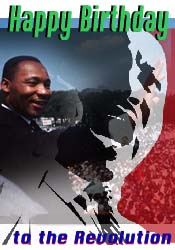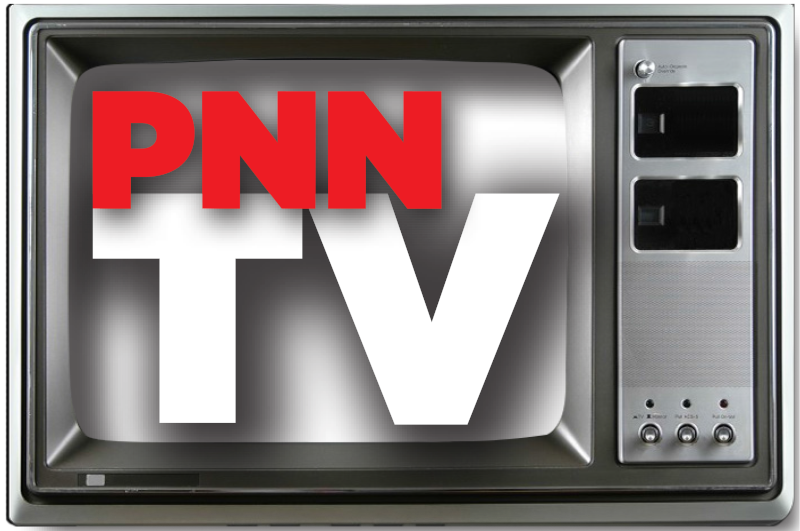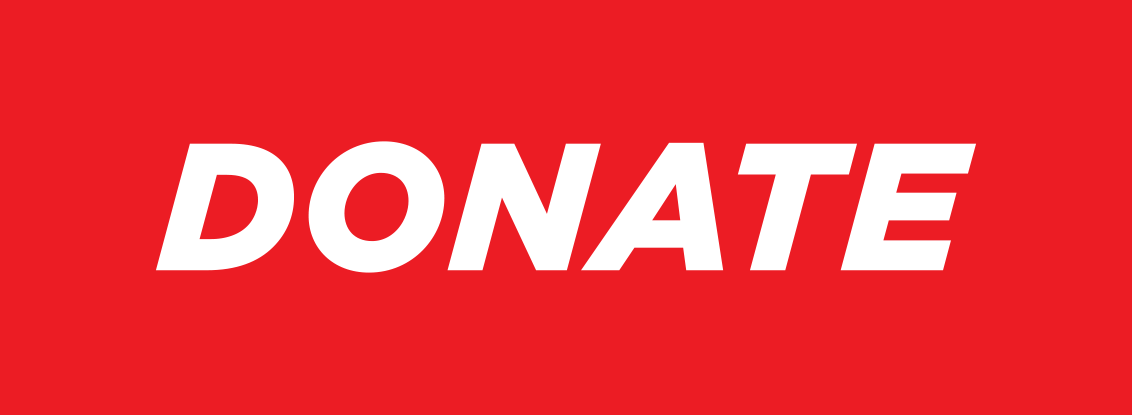Disability Advocates of Minorities Organization (DAMO) celebrates Martin Luther King Jr.’s Birthday
 |
|
by Leroy Moore January is Martin Luther King, Jr.’s birthday and as a Black, disabled activist\writer, I’ve turned to MLK’s incredible book Why We Can’t Wait, on the birth of the Black Revolution in Birmingham, Alabama in which he explains why African Americans could not wait any longer. Disability Advocates of Minorities Organization (DAMO) is standing on the message of this book to inspire the birth of the Disabled People of Color Revolution. DAMO will be introducing their Breaking the Silence & Organizing Campaign, funded by the Catholic Campaign for Human Development, during a press conference around Martin Luther King, Jr.’s birthday. The passion, determination, and leadership of MLK, Jr.’s work and his book Why We Can’t Wait should be our guiding light, our strength, and our faith, for our future, reminding us why, as disabled people of color, we can’t wait. DAMO, like Martin Luther King, Jr., has also realized that the media is essential to bring awareness to the masses about the lives, struggles, and accomplishments of disabled people of color. In the words of Martin Luther King, Jr., "Without the help of the media, the voices of African Americans will always be muddled and change will be very, very slow, causing our people to release their pent up anger in violent ways." I like to say that today we, disabled people of color, have connected with local media and our beautiful light will enlighten our community. Dr. Martin Luther King Jr. once wrote: "In order to be somebody, people must feel themselves part of something." This is one of the main reasons why DAMO is here. Today, DAMO and I have some reasons why disabled people of color can’t wait and why disabled grassroots organizations of color are long overdue. Over the past thirty years, California’s population has undergone a tremendous shift in its racial and ethnic distribution. The 1990 US census clearly points out that the population of people of color in California has out numbered the White population. According to organizations for and by individuals with disabilities and the 1998 report from the National Council on Disability, the disabled population in California has an over representation of disabled people of color. With these two facts you might think that California would have many organizations run by and for disabled people of color, but until very recently this was not the case! Although California is the home of the Independent Living Movement and has a rich history with the disability rights movement, until recently there were no organizations for and by disabled people of color. Because of this, many disabled people of color have been left outside of the disabled rights movement, especially the Independent Living Movement to deal with the concept of race and disability. During the Black civil rights movement, leaders realized that institutional power was essential to the movement. To carry out their messages they created their own organizations like the NAACP and the Urban League. The same is true for the disabled people of color movement here in California. The new disabled people of color movement has formed newly state-wide and community-based organizations , like the Harambee Educational Council, the Asian Pacific Islanders with Disabilities Organization, and Disability Advocates of Minorities Organization. But they are still struggling to stay alive while traditional disabled organizations suck up resources, money, and media attention. Today Americans with disabilities have laws on the books to deter discrimination and bring disabled Americans into mainstream society—the Rehabilitation Act of 1973, the Individual Disability Education Act of 1975, and now the Americans with Disabilities Act of 1990. Like Martin Luther King, Jr. realized in 1963, DAMO has realized in 2002 that very little has changed for disabled people of color since the signing of these laws. This is why today, on Martin Luther King, Jr.’s birthday, we are calling on our disabled brothers and sisters of color and our allies to help us in this campaign, and then the revolution. We, disabled Californians of color, are playing catch up and need a platform from which we can educate and organize. DAMO is that platform. This year Americans will be celebrating the 12th birthday of the Americans with Disabilities Act, what disabled Americans call Independence Day. But, as a Black, disabled man, Independence Day is still far away. On July 26, 1990 President Bush turned to the four White, disabled activists sitting beside him and proclaimed, "Let the shameful wall of exclusion come tumbling down." However, disabled people of color are far behind our White, disabled colleague in every arena—only one Black of working age in every forty is a college graduate. The rate among non-disabled Blacks is just 29 percent of the rate among disabled Whites. The unemployment rate among disabled people of color is in the high nineties. According to a paper published in October of 1995 entitled Disability Among Racial & Ethnic Groups, from the Disability Statistics Rehabilitation Research & Training Center at University of California, at San Francisco From what I stated above, it makes sense that DAMO is here but we need more grassroots organizations run for and by disabled people of color especially in California. We also need financial and community support for organizations, like the ones I mentioned, that are performing incredible work on boot string budgets. Communities of color are in desperate need of education, empowerment, and advocacy on rights, services, history, talents, and other issues that touch disabled people of color by disabled people of color. DAMO’s Breaking the Silence and Organizing Campaign will do just that and more but we need you to get involve. The only way we, disabled people of color, can educate our communities, show our talents and solve our problems is to come together and organize and speak our stories. Disabled people of color face racism, sexism, disablism, heterosexism, and classism, so yes, we have a lot to battle with but we must come out and organize because nobody will do it for us. Our youth deserve to feel part of something. Dr. Martin Luther King, Jr. said "Oppressed people cannot stay oppressed forever." This is true as today we see Disabled people of color are organizing in London, England, Brazil and in South African to name a few. Disabled people of color in California, the Bay area and all over the US, it is our turn! Happy B-Day Dr. Martin Luther King, Jr. and thank you! For more information on DAMO’s upcoming press conference and their Breaking the Silence Campaign call Leroy Moore at (510) 649-8438 or visit Leroy’s column Illin-N-Chillin at www.poormagazine.org. |



